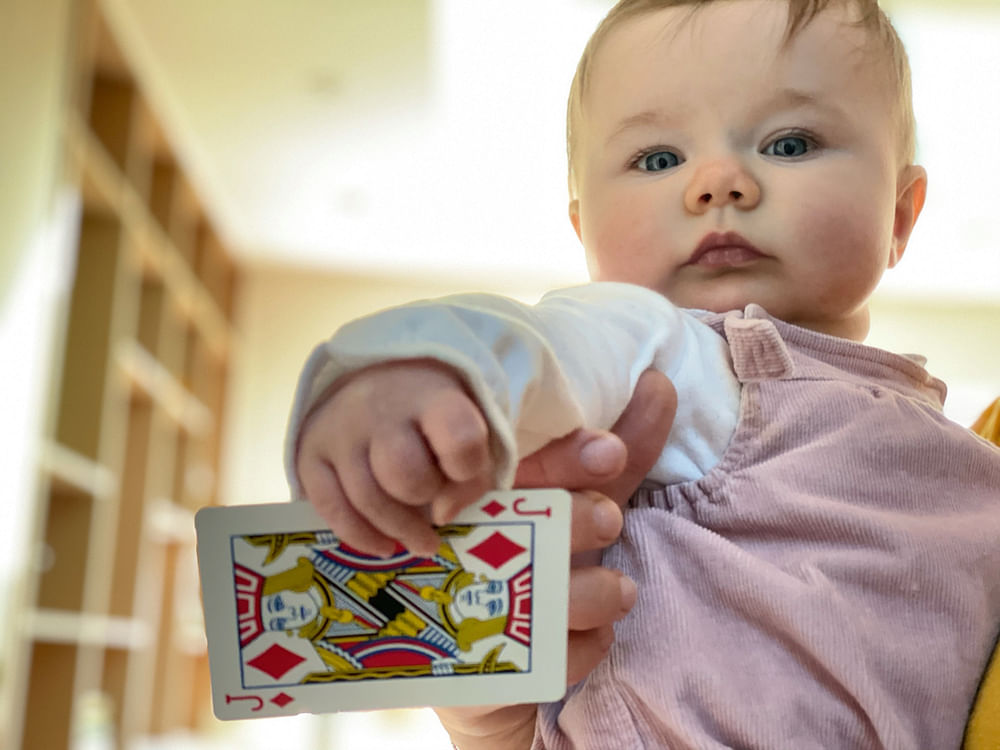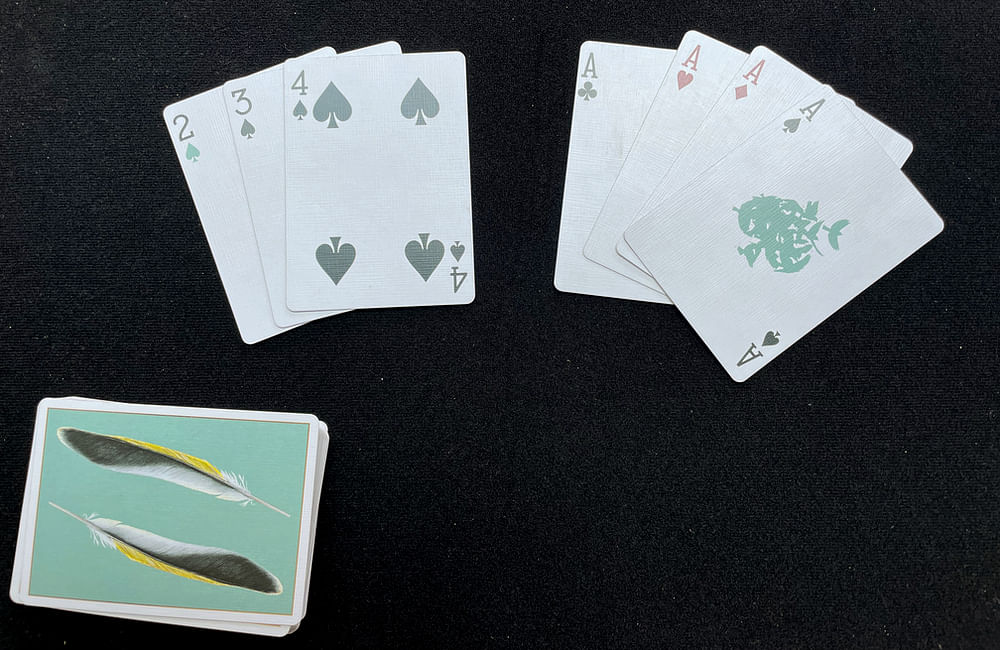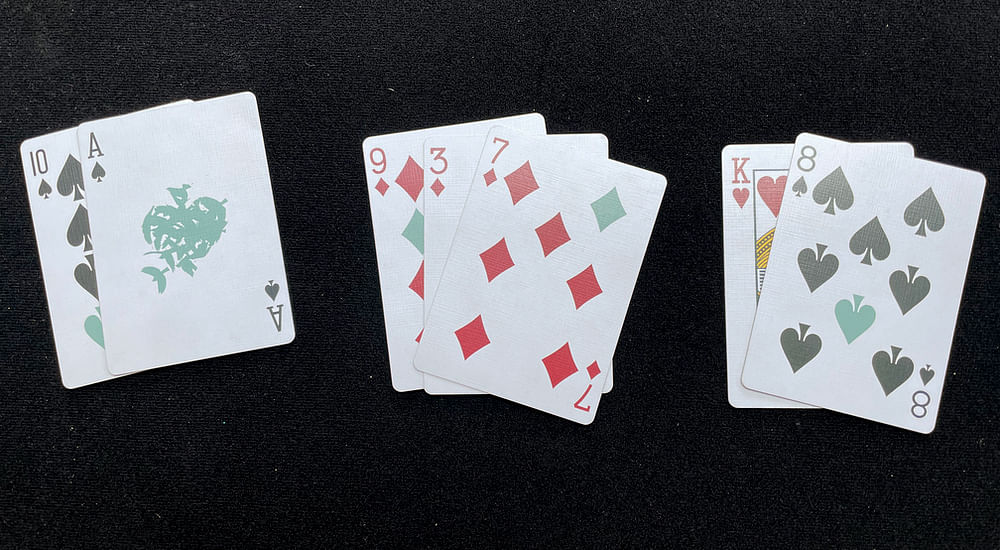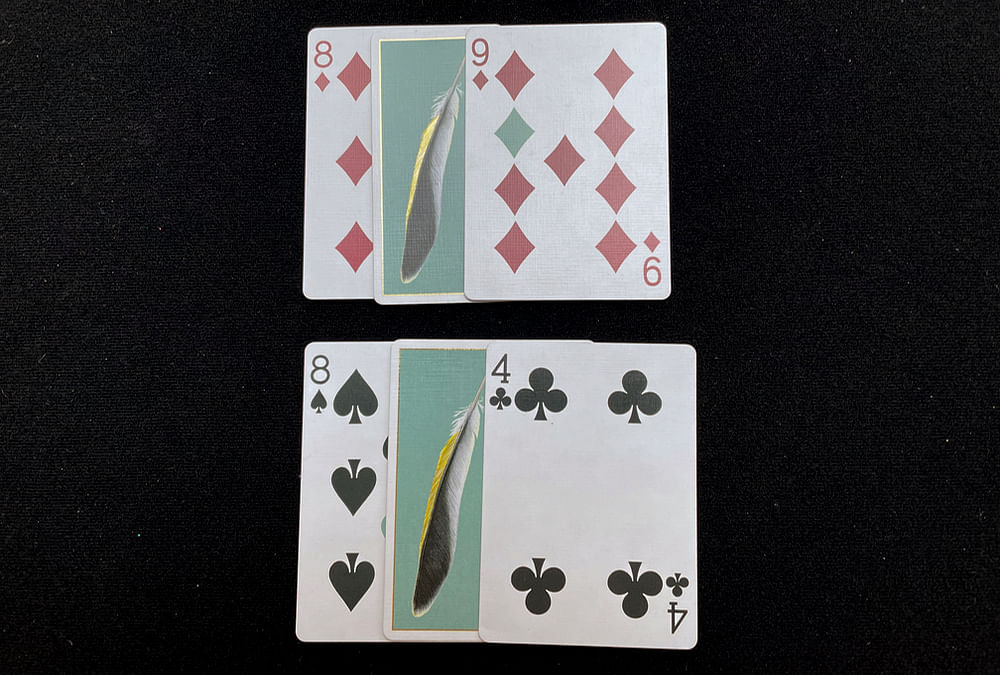Six Easy, Fun and Simple Classic Card Games for Kids
We’ve all been there. A rainy day, a family vacation… “Dad...Mom…I’m bored...what can I do?” Thanks to this article, you’ll always have an answer. Card games teach kids strategy, help with math, social skills, sharing, shape-recognition and more. You can always have a deck of playing cards handy, and, for bonus points, play the games with your kids. It’s the best way for them to learn and it will give them screen-free interaction with you too. Obviously, being a website for magic tricks, we'd also recommend you learn some card magic to entertain your kids with when they get bored of playing cards! Or, indeed, get them a good magic book and learn why card tricks are great for them to learn too! You can find out here where to learn magic tricks for free.

General Tips For Playing Cards With Kids
Practise The Rules
When you have players that are inexperienced with a game, have a few practise rounds after you’ve explained the rules. This will help build the child’s confidence with the game before you play for “real”.
Remove Some Playing Cards
A lot of the games listed here are simple pair matching games. To make it easier for younger players, you could start with using just half the deck. It won’t change the gameplay dramatically, but will make it easier.
Get Some Cheaper Cards
Kids will buckle, bend and even chew your playing cards. So just get a couple of cheaper decks from CVS or similar. Not need for premium cards for games with your children!
Who Should Go First?
It’s up to you. We normally play “youngest first”. But you could also cut for first go, with the highest card winning, roll a die, or whomever is sat to the left of the dealer.
Classic Card Games For Children
Here are the rules for six great classic card games I used to play with my parents when I was a kid.
1: Cheat
This was by far our family favourite. It’s simple, but addicting.
What’s Needed?
One deck of cards
Minimum of three people
Aim Of Game
To get rid of all your cards.
How to Play Cheat
Shuffle the deck and deal one card to each player until all the cards are in play. The first player has to place one to four cards of the same value on the discard pile, calling what the cards are. “Three Queens”, for example. The kicker? They can lie. If another player thinks they’re lying, they can call them a cheat.
If the player is accused of being a cheat, the played cards must be shown to everyone else. If the challenge is correct, they cheater must take back their cards and all cards in the discard pile. If the person who accused them is wrong, they must take all the cards.
If the player is not accused of cheating, play passes to the left. The next player must claim to be placing cards either one higher, the same or one lower than the previously called hand. So if the first player called “Three fives”, the next player must play fours, fives or sixes.
Notes
Handy for magicians used to sleight-of-hand, you can decide to allow cheating on the number of cards played in a hand. So the player could claim “three sevens” but actually place down give cards.
If you’re playing with more than sive or seven players, it’s best to use two decks of cards.
For those of a legal drinking age, Cheat is often played as a drinking game. The rules remain identical, but if someone is caught cheating, or wrongly accuse someone, they have to take a drink.
2. Rummy
Easy Seven Card Rummy. This is a simplified version of the game that kids will love.
What’s needed?
Two or more players.
A regular deck of 52 playing cards.
Aim Of Game
To be the first player to call “Rummy”. You can call Rummy as soon as you have one set of three and one set of four cards. A set can be three or four of a kind, or a run of three or four cards (of the same suit). Aces are low.
How To Play Rummy
Deal each player seven cards, one at a time. The remaining cards are placed in the middle of play. The top card of this pile is turned face up and placed to the side of the pile. Play starts at the left of the dealer. That person can either pick up the face up card, or the top face down card of the pile. They must then discard one card, maintaining seven cards in total in their hand. The discard is placed face up on to the face up card already on the table. Play continues round like this until someone shouts "Rummy"!

An example of a winning hand in Rummy.
3. Blackjack (Twenty-One)
No need to go to Vegas to enjoy a game of Blackjack. Plus, it will really help kids practise addition.
What's Needed?
Two to ten players.
A regular deck of playing cards.
Aim Of Game
Make your hand total 21 without going over (going bust).
How To Play Blackjack.
The cards are shuffled and two cards dealt to each player. The hand is examined and the player decides if they want another card (twist) or if they want to stay with just two cards (stick). A player can keep asking for more cards, as they try and total 21. However, as soon as they go over 21, they lose that hand. After all players have stuck, (meaning that they’ve decided they don’t want any more cards), all hands are shown. The winner is the player who has gotten closest to 21.

The end of a game of Blackjack. The winning hand is on the right of the image.
4: Beggar My Neighbour
What's Needed?
Two to six player.
A regular deck of playing cards.
Aim Of Game
To get rid of all your cards.
How To Play Beggar My Neighbour
Deal all the cards face down, one by one, to each player. You are not allowed to look at your hand. Play starts to the left of the dealer. The player turns over their top card, starting a pile in the center of play. This continues around the circle of players until someone turns over a Jack, Queen, King or Ace. This player the makes the next player play a set number of cards. (Ace = four cards, King = three cards, Queen = two cards, Jack = one card). The next player goes ahead and places that number of cards on the center pile. However, if they turn over an Ace, King, Queen or Jack, they must stop playing, and demand of the next player to play the appropriate amount of cards. Whomever is last in turning over an Ace, King, Queen or Jack must pick up the centre pile and play resumes. The winner is the first person to run out of cards. There’s no strategy in this game, it’s just pure and simple luck. But it’s still great fun to play.
5. War
War. What is it good for? Well, it's great to keep kids amused and help them learn about number values!
What’s Needed?
Two people
A regular deck of playing cards
Aim Of Game
Winning is determined when one player has collected all the cards.
How To Play War
Deal the entire deck, one by one, to each player. Each player will have 26 cards. Both players flip the top face down card of their pile face up on to the table. The highest card wins, and the winner collects the two cards and places them face down underneath their pile of cards.
What happens when there’s a tie? Well, that’s when you go to war!
To engage in the war, both players put the next card from their pile face down. Then, the next card from the pile is placed face up onto the just-dealt face down card on the table. The player with the highest face up card wins the war, and collects their spoils, which will be both the face down and face up cards on the table. This will be the initial face up matching cards, the face down blinds, and the new face up cards, totaling six cards. In the statistically unlikely event that another tie happens, you just go to war again.
The game is over when one player has all the cards.

Showing what happens when you have to "go to war" during a game.
6. Switch (Crazy Eights)
There are several similar games to Switch: Two Four Jacks, Blackjack, Mau Mau and Peanuckle.
What's Needed?
A regular deck of playing cards.
More than two people.
Aim Of The Game
The winner is the person to get rid of all their cards first.
How To Play Switch
Deal seven cards face down to each player. The remaining cards are placed face down in the middle. The top card from the middle pile is turned face up and placed to the side of the pile. Starting from the dealer’s left, the player must put down a card that is the same value as the face up card, or matches the suit. If the seven of clubs was showing, the playing could put down any seven or any club. If you cannot play a card, you must pick one up from the pile.
Switch Special Cards
There are several variations of these cards, depending where you are in the world. These are the most common special cards:
- Ace - If you play an ace, you can decide a new suit that the player next to you has to play
- Two - If you play a two, the player next to you must either play a two, or pick up two cards
- Eight - If you play an eight, the next player has to skip a go
- Jack - If you play a Jack, it reverses the direction of play
Additionally, there is always a “Last Card” rule. Meaning you must declare when you are on your last card. If you forget this important point, and the next player has played their card, you have to pick up seven cards as a forfeit.
